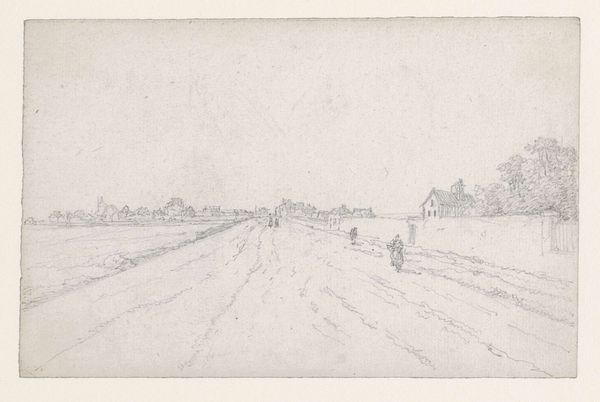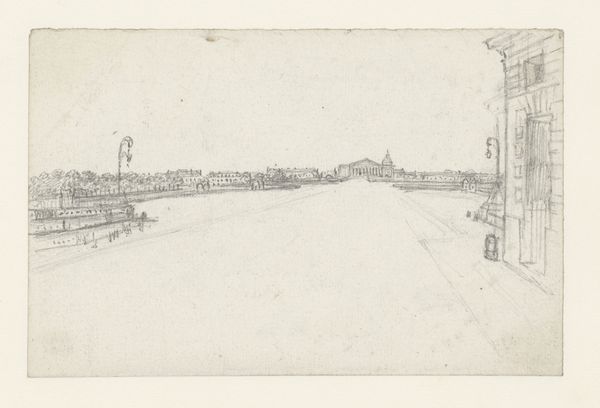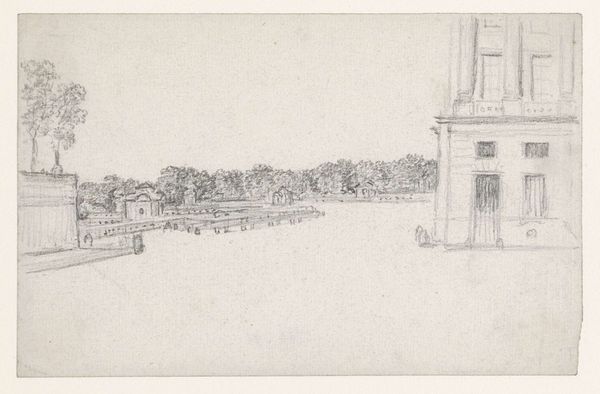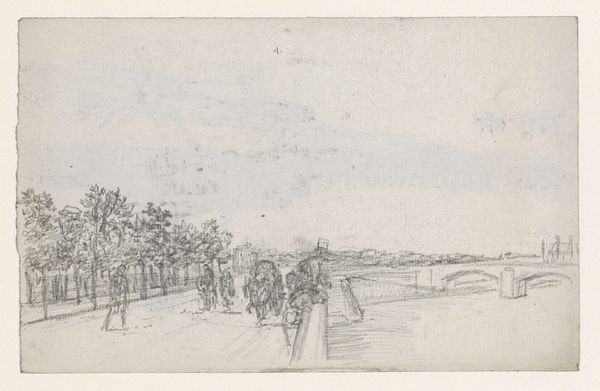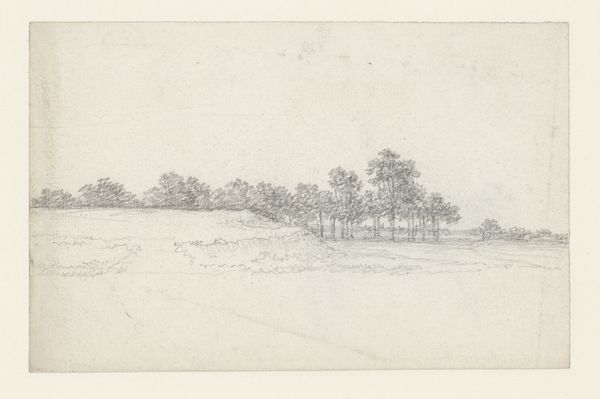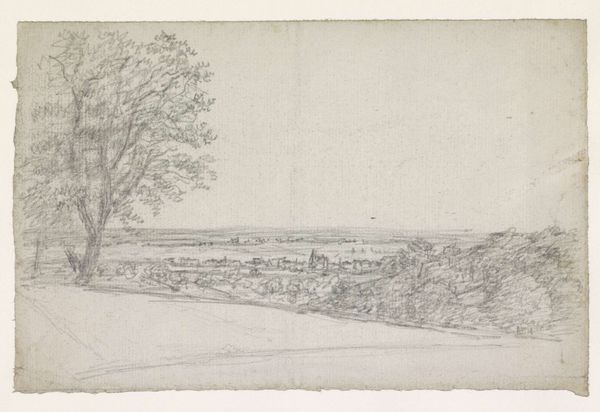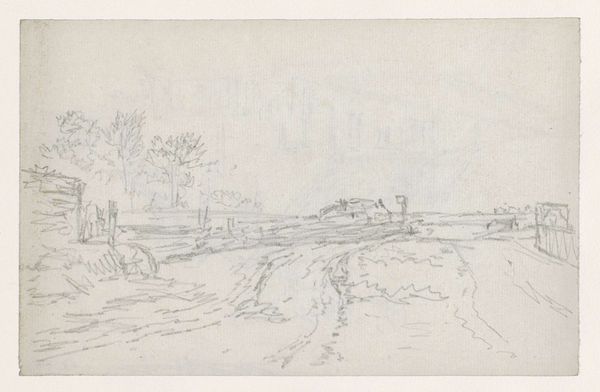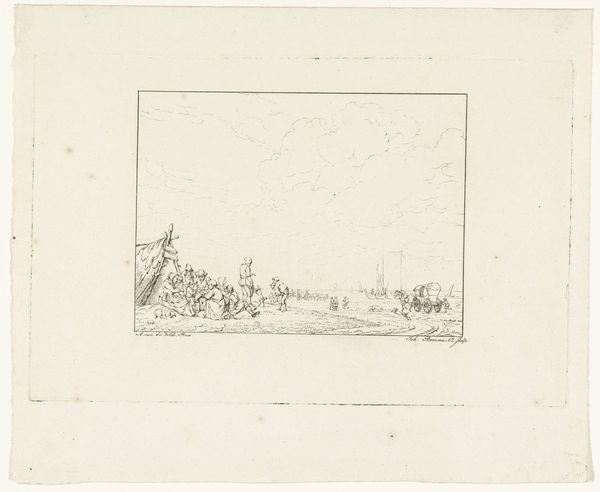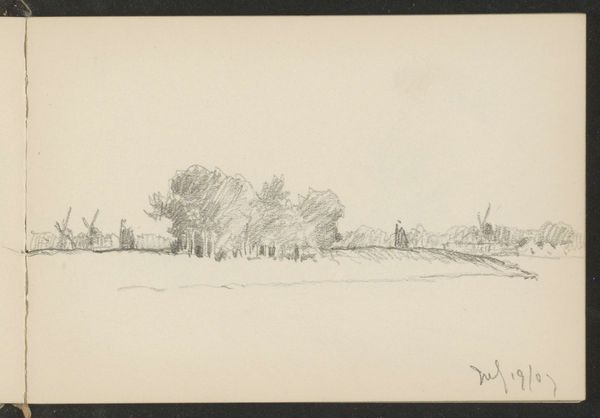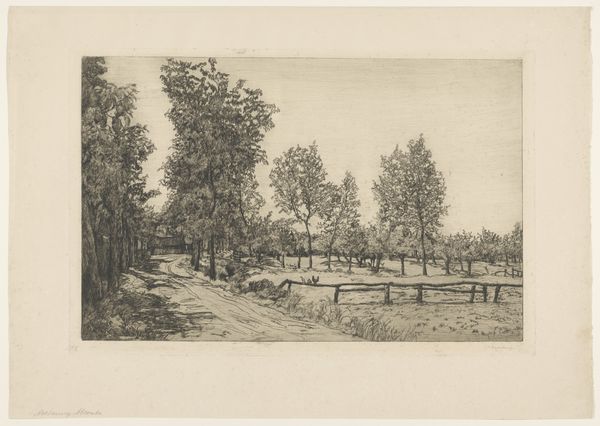
drawing, pencil
#
drawing
#
neoclacissism
#
landscape
#
etching
#
pencil
#
cityscape
Dimensions: height 100 mm, width 155 mm
Copyright: Rijks Museum: Open Domain
Editor: This is "View of the Dome des Invalides from the Champ de Mars" by Georges Michel. It’s difficult to nail down a specific date, but it’s thought to be somewhere between 1773 and 1843. It’s a pencil drawing with some etching. What really strikes me is the contrast between the rather severe architectural lines and the softer, more naturalistic rendering of the trees. What’s your interpretation? Curator: It’s interesting that you noticed that contrast. Michel was working in a period defined by shifting political power and rapidly changing aesthetic tastes. This piece demonstrates the social forces and artistic trends vying for dominance at the time. You see the neoclassical ideals reflected in the architecture - order, reason, civic virtue -but how do you think that is presented with what was actually occurring within French society? Editor: So the artist is deliberately contrasting the architectural ideal with the realities of the social landscape? It’s an interesting position. It makes me think about how spaces are presented to the public versus their true function. Curator: Precisely! Michel’s cityscapes are interesting not just as topographical records, but also as political statements. They subtly critique the power structures embedded within the urban environment itself. What do you observe about the space given to the Champ de Mars? Is this more or less land and space than in that period? Editor: Hmmm, I need to read up on that space, as it has gone through transformations and events during the periods cited. What I do note is that Champ de Mars, or the large empty field of dirt, takes up most of the sketch. This is where military reviews would have happened. Curator: Right. And by emphasizing that space, what is Michel really underscoring about French society at that time? Editor: The dominance of the military and centralized power. He’s using the cityscape as a lens to examine societal values. Curator: Exactly. And reflecting on all of this shifts our viewing lens as being "only a picture," instead turning the artwork into a historical commentary of events at the time. Thanks for your observations; your interpretation definitely shed more light on my understanding of his social statements. Editor: Thanks for walking me through the layers of meaning hidden within the drawing. It makes me see beyond just the aesthetics.
Comments
No comments
Be the first to comment and join the conversation on the ultimate creative platform.
